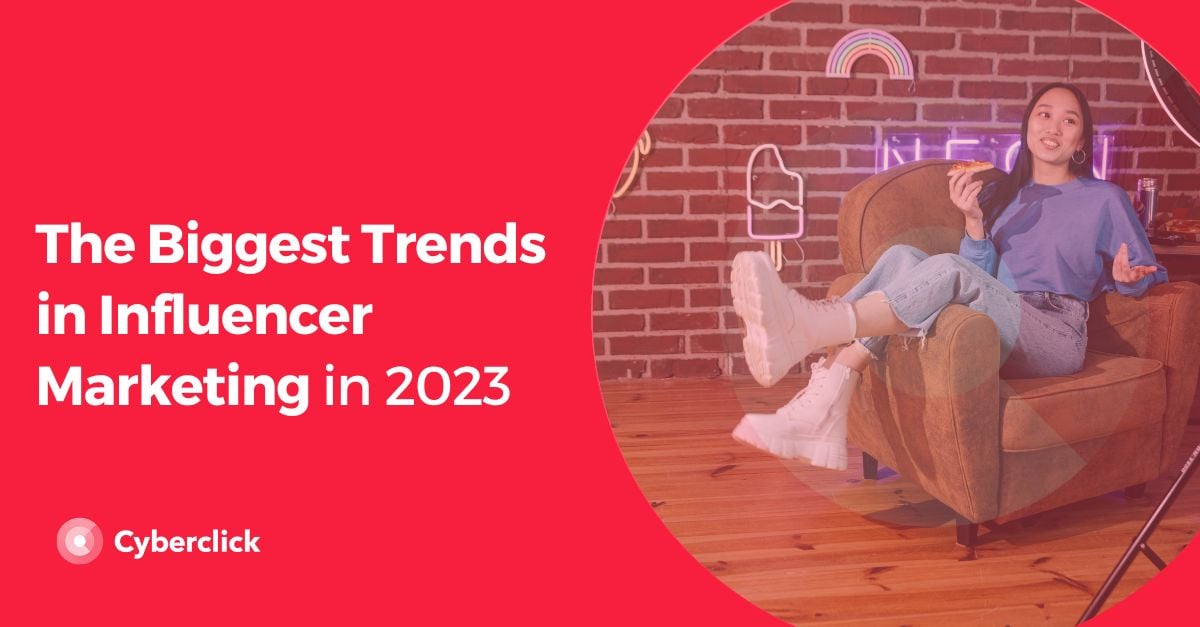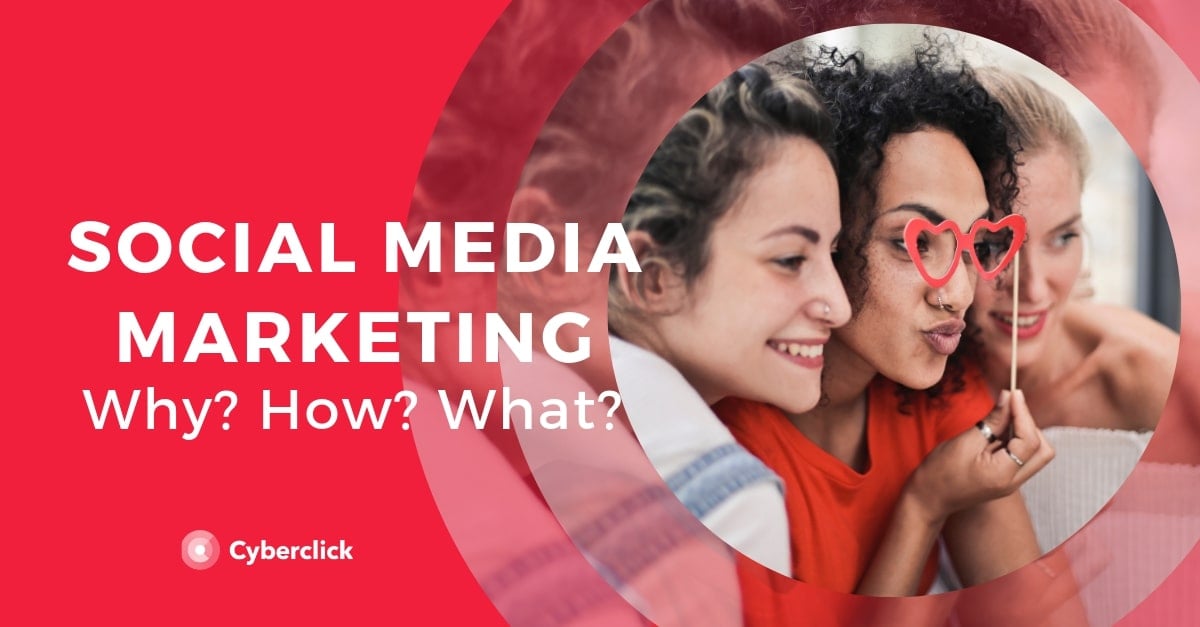We marketers are living in a time when changes have been constant and we have had to adapt quickly and effectively to them. What we thought was going to happen has not happened, or not quite, and what we did not expected, like the great digitalization of society, has come years in advance. From overall shifts in strategy and the evolution of Artificial Intelligence, to specific updates in Google and Social Ads channels, 2024 has a lot in store for us. Let's find out what online marketing trends are coming and what we can expect this year.

Strategic Marketing Trends for 2024
1) People-Led Marketing: the New Evolution of Marketing
In the new digital landscape, consumers demand products and brands they can identify with. Therefore, companies are tasked with finding new ways to connect with them. People-Led Marketing emerges to forge a new bridge of communication between brands and consumers, where people are at the center. The key to PLM is based on these four pillars:
- Content generated by the brand and its users.
- Data collected from users, helping to better understand their behavior and patterns.
- Technological assets that enable the implementation of automations and scaling of actions.
- New online channels for promoting this content.
Under these four pillars, the People-Led Marketing methodology activates and feeds a flow of actions that enable the improvement of almost all of your business KPIs.
2) Privacy-Centric Marketing
Privacy-Centric marketing focuses on prioritizing user privacy, emphasizing transparent data collection, secure data handling, and consumer consent. This approach, as well as guaranteeing compliance with regulations, aims to build trust among users, a significant challenge for brands primarily operating digitally.
In 2024, this will become one of the most interesting trends, as 83% of consumers desire more control over their personal data. With the looming "cookieless future," the era of third-party cookies and individual user tracking for targeted advertising is nearing its end.
3) Focus on Niche Content and Channels
Brands are finding more success in campaigns targeting specific audiences due to information overload and market saturation. This trend is transversal and affects various channels and formats. In the OTT world, niche platforms like Mubi (classic cinema), Crunchyroll (anime), and Yaddoo (documentaries) are outperforming broader platforms like Netflix or HBO. Their success is encouraging more companies to launch their own OTT services containing very niche content, which require less investment.
Similarly, niche podcasts are thriving as listeners seek specific content of their interest. As for influencers, niche influencer marketing strategies also focus on specific market segments, using specialized influencers for greater impact and loyalty. Although the content reaches a lower amount of people, they tend to be more committed and loyal, proving more effective in the long run.
4) Allbound Strategies
Allbound Marketing is a sales and marketing methodology that combines both inbound and outbound approaches for better customer acquisition and sales enhancement. This strategy involves interactive communication between the company and potential clients, offering valuable content and addressing queries to foster brand trust.
To fully grasp Allbound, it's crucial to understand both inbound and outbound marketing and sales. Contrary to the belief that they are mutually exclusive, they can coexist within the same company, often yielding superior results when combined.
Artificial Intelligence Trends for 2024
5) Advanced Content Generation
Since ChatGPT became famous in early 2023, both generative and conversational AI have continuously improved, offering users much more optimal results tailored to their needs. Additionally, many softwares and tools have incorporated these technologies into their functionalities to facilitate clients' work.
Well, if 2023 was the "boom" year for these two types of AI, 2024 will be the year they are perfected to offer improved content. Most importantly, we will see advancements in video and music generation, the two formats that have been least developed and exploited.
6) Artificial Intelligence in Customer Service
By 2023, it had become fairly common to encounter chatbots and virtual assistants. In 2024, these tools are expected to become even more mainstream and will see further enhancements, thanks to the advancements in Artificial Intelligence and machine learning. This shift is largely driven by the preferences of millennials and Generation Z, who find these technologies helpful for resolving straightforward issues.
Additionally, we'll see the rise of omnichannel chatbots. These are interconnected across various platforms, allowing users to initiate a conversation with a brand on one channel and seamlessly continue it on another.
7) Virtual Influencers and AI-Generated Personalities
Aitana López (@fit_aitana) portrays herself as a fitness, gaming, and cosplay enthusiast. Meanwhile, Maia Lima (@limaiaaa) identifies as a mystical and pure individual. At first glance, they seem like polar opposites, but do you know what connects them? Neither of them actually exist.
Both are creations of artificial intelligence, a fact openly acknowledged in their profiles with the hashtag #iamodel. Another common factor: they were both crafted by the same agency, The Clueless, which specializes exclusively in developing AI-generated models. Their goal is for brands to collaborate with these virtual beings just as they would with any other influencer.
8) Google's Advances in AI
Google has set its sights on dominating the realm of Artificial Intelligence, and 2024 is promising to be a pivotal year. The tech giant, Google, has developed several generative AI tools to simplify everyday tasks for users:
- Bard: Google's AI that competes with the well-known ChatGPT. It's based on conversational neural language models, specifically on LaMDA, developed by the company itself. Bard aims to use web information to provide high-quality and original answers.
- Duet AI: An AI integrated into Google Workspace that classifies and analyzes data, automating the creation of content and workflows.
- Vertex AI: This makes the use of generative AI more accessible, offering solutions from AI to search and conversation on a single platform.
- Gemini: Google's new language model launched in December 2023. This technology understands various types of information, ranging from texts to images, as well as audio, videos, and programming code.
9) Geomarketing and Artificial Intelligence
Geomarketing is a type of digital marketing that involves displaying content to users based on their physical location at any given moment. This is achieved using geolocation data from mobile devices or social networks.
In 2024, geomarketing is expected to take a significant leap forward by integrating with Artificial Intelligence. This integration aims to achieve what seemed nearly impossible: measuring the impact of a marketing campaign (both online and offline) on a physical store. While such measurement is standard in e-commerce, gauging the effect of a campaign on physical locations is not as straightforward.
Social Ads Trends for 2024
10) The Rise of Social Commerce
Social commerce enables users to view a brand's product catalog, see prices and reviews, and even (in some cases) make purchases directly on the social media platform, bypassing the need to visit an e-commerce site.
As you can imagine, this significantly enhances the user experience by streamlining the purchasing process, making it more efficient and straightforward. In this context, Meta and Pinterest are planning to introduce new functionalities in 2024, and the data supports their move:
- 60% of Instagram users say they discover new products through the platform (HubSpot).
- In total, 54% of social media consumers use these platforms to search for products (Globalwebindex).
- The annual spending per social commerce shopper is expected to reach $937 in 2025.
11) Generative AI for Creating Ads
AI is set to be one of the most powerful trends in marketing, especially in social ads for 2024. Many social networks are planning to implement it for various purposes within their platforms.
Meta, for instance, has already announced the integration of AI functionalities to maximize campaign results and assist advertisers. Meta's goal is to increase the productivity of campaign creation, as well as its personalization and performance.
12) Influencers and Indirect Product Promotion
It has always been common to see advertisements featuring influencers where it was evident that they were trying to sell something. Nowadays, this approach often generates resistance among users, particularly because they are overwhelmed by the sheer number of campaigns and ads they encounter every time they use a social network.
As a result, in 2024, we're going to see a trend towards more indirect advertising – those where it's not obvious that someone is trying to sell us something. This can be achieved in various ways, such as not directly talking about the product, but instead subtly incorporating it into the usual content of influencers while they discuss related topics.
13) Social Media: The Preferred Medium for Advertising Investment
The internet is the most consumed medium in countries like the U.S. The search engine Google is the most visited website, followed by social networks such as YouTube or Facebook, from Meta.
Given these statistics, it's not surprising that advertising investment in social networks is expected to exceed $227 billion in 2024. This outpaces the figures from 2023, making it one of the fastest-growing mediums alongside Connected TV and Retail Media.
Google Trends for 2024
14) AI and Google Ads
What we will see in 2024 is AI taking center stage in Google Ads, shifting from a supporting to a leading role. The company aims to make this technology the cornerstone of Google Ads' entire suite of marketing functionalities, as announced at Google Marketing Live 2023. To achieve this, a set of AI-driven tools have been developed, such as The Helpful Chat, boosting Automatically Created Assets and AI for a Cookie-less Future.
15) The Helpful Chat
Creating new campaigns in Google Ads can be complex, so the company has introduced a chat feature within Google Ads. This chat can interact in natural language, assisting with various processes, providing ideas, or reviewing different aspects of a campaign.
16) AI for a Cookie-less Future
2024 appears to be the year when Google will finally phase out cookies entirely. As such, the company is preparing by testing new signals (with the help of Artificial Intelligence) to ensure advertisers can continue to reach their relevant audience and measure results effectively.
17) Boosting ACA
Automatically Created Assets use content from other brands and your own to create more appropriate descriptions and headlines. In 2024, Google aims to enhance these to help brands increase relevance while staying true to their style.
18) Video Ads on the Rise
In September 2023, Google announced that Video View Campaigns (VVC) were now globally available. These campaigns are designed to help brands increase their video views across various formats on the YouTube platform. They work by showcasing the highest-performing creative content to audiences most likely to convert.
Consequently, in 2024, we are likely to see an increased use of VVCs. These campaigns, powered by Artificial Intelligence, have been shown to achieve up to 40% more views than in-stream CPV (Cost Per View) campaigns and offer a 30% lower cost per visit.
Content Marketing Trends for 2024
19) Hyper-Personalization and Efficiency in Content Creation Thanks To AI
Artificial intelligence has become a very useful tool for content creation, as it can generate everything from a blog post or social media copy to a video script. This is making content creation much more efficient and cost-effective, even as human intervention is needed to improve, polish and personalize that content. But, in 2024 it is expected that AI, as it advances and becomes more sophisticated, will be able to create increasingly personalized and targeted content in order to further engage the user and provide a better user experience, increasing the effectiveness of content-focused marketing campaigns. That said, it is expected that tools equipped with artificial intelligence to create eye-catching and attractive content will increase, leaving the tasks focused on its improvement and personalization to the human side. I
20) Greater Emphasis on Immersive and Interactive Content
As immersive and interactive experiences continue to boom, more and more companies are trying to create content with these characteristics. This not only generates more traffic, but also increases audience participation and interaction, something that search engines like Google value very positively and tend to place among the first results of the SERP.
Immersive and interactive content isn't a novel concept. Yet, with the advent and progression of artificial intelligence and augmented reality, we can now advance from 360º videos to pre-purchase product or service trials. This specific content type is gaining importance due to increasing user demand.
21) Increasingly Long-Form Content
While there's a prevailing inclination toward crafting concise content, primarily for entertainment on platforms like TikTok, when the goal is to inform and provide utility, the preference leans toward long-form content—whether in writing, video, or audio.
Anticipating a shift towards more informative and useful content, companies are expected to invest in content that caters to users seeking in-depth knowledge on a topic. Notably, TikTok, initially recognized for short videos, has adapted to this trend by announcing its support for videos up to 15 minutes long.
22) Multichannel Purpose
Consumers access content from various sources, prompting companies to establish a presence across diverse platforms to reach their target audience. However, this doesn't necessitate creating unique content for each platform; instead, adaptation is key. Many companies will delve deeper into this approach in 2024.
For instance, you can write blog articles and then repurpose the information into short, engaging social media posts, effectively driving web traffic. Maintaining a presence on multiple platforms requires a well-organized content calendar and a content management system (CMS). It also entails allocating time for audience interaction, especially on social networks.
Inbound Marketing Trends for 2024
23) Making the most of Predictive Analytics
Predictive analytics involves analyzing vast amounts of data (with the aid of dedicated tools and programs) to identify patterns and make predictions based on them. While many companies already use this resource, it's expected that even more will benefit from predictive analytics in 2024. This growth will largely be driven by advances in Artificial Intelligence and the increasing accessibility of this technology, enabling businesses of all types to utilize it effectively. Predictive analytics will enable you to make better future decisions and take timely preventative actions to avoid potential mistakes, significantly improving your company's results.
24) Voice Search Optimization (VSO) to differentiate your brand
Voice search is on a steady rise. Today, one in four people regularly uses voice search on their mobile devices, and the global voice recognition market is expected to reach $26.8 billion by 2025. Moreover, by 2024, the number of digital voice assistants is projected to hit 8.4 billion.
But why this surge in voice search? It seems that 90% of consumers find it faster and more convenient. With all this data, it's clear that voice search is not just the future – it's an imminent reality. For brands, this means that text-based SEO will gradually take a back seat, and they'll need to adapt their SEO strategies to the changing times with new keywords, among other things.
25) Humor as a Key Element
Did you know that we spend an average of 30 minutes a day consuming memes? It might be attributed to the need to disconnect from the overwhelming flood of information we encounter each time we glance at our phones. Coupled with the desire to take a break from our fast-paced world, memes provide an outlet for relaxation and enjoyment.
This is why more and more companies are embracing the creation of light-hearted, humorous, and witty content. Even those businesses that sell products or services you wouldn't typically associate with humor are adding a comedic touch to their content.
Still not convinced? Consider this: 60% of consumers are more likely to buy from a company that uses memes than one that doesn't.
Responsable de la estrategia de contenidos y visibilidad en Cyberclick, con enfoque Allbound y especialización en posicionamiento SEO, GEO y automatización con IA. Gestión avanzada del CRM con HubSpot: base de datos, workflows, lead nurturing, scoring y reporting. Experiencia en marketing digital, comunicación corporativa y periodismo, uniendo estrategia, creatividad y tecnología para captar y convertir leads cualificados.
Responsible for content and brand visibility strategy at Cyberclick, with an Allbound approach and specialization in SEO, GEO (Generative Engine Optimization), and AI-powered automation. Advanced HubSpot CRM management: database segmentation, workflows, lead nurturing, scoring, and reporting. Background in digital marketing, corporate communications, and journalism—combining strategy, creativity, and technology to attract and convert qualified leads.






Leave your comment and join the conversation